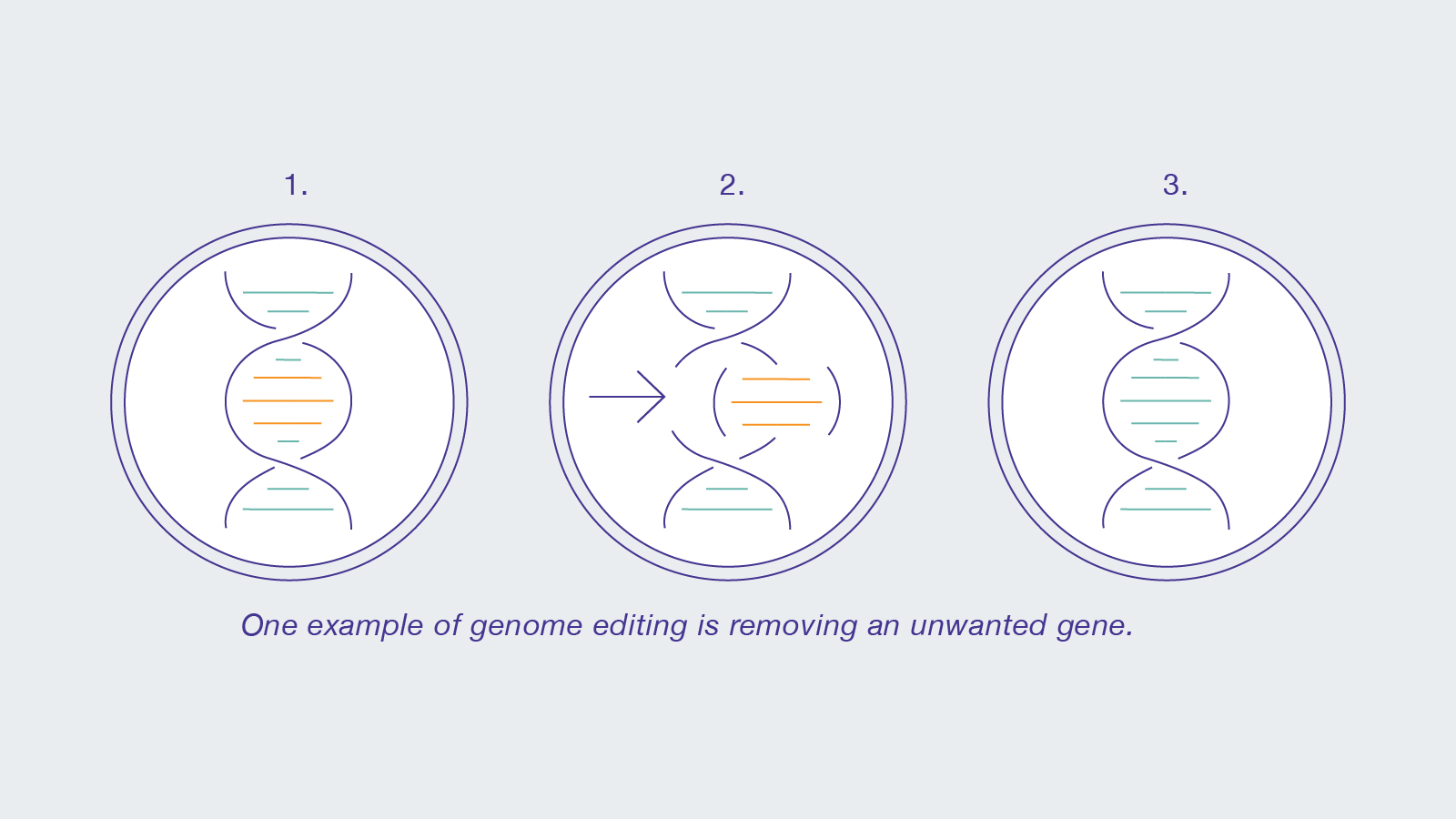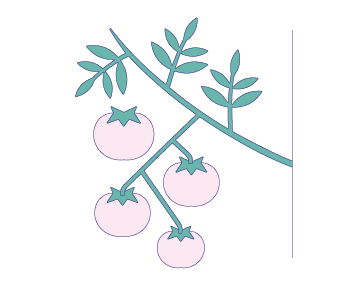Genome Editing in Agricultural Biotechnology
Genome editing is a tool that plant breeders can use to introduce new traits into crops.
Did you know?
A genome is the complete set of DNA in an organism, such as a plant or animal. DNA is the molecule inside cells that carries genetic information; it provides instructions that tell each cell what to do.
Why Use Genome Editing?
Genome editing allows plant breeders to make changes to plants more quickly and more precisely than through conventional plant breeding methods. It can take plant breeders decades to introduce a new trait into a crop through conventional plant breeding methods, while genome editing has the potential to shorten that timing to a few years.
Putting Genome Editing to Work
Plant breeders are using genome editing to develop food crops that address the needs of a growing global population and can handle a changing environment. For example, scientists have created cacao plants—the main ingredient in chocolate—with stronger immune systems that can fight a disease that typically kills significant numbers of these crops.[1] Another example is a type of tomato that has shortened stems, so it grows faster and requires less space, making it better suited for indoor and urban farms.[2]
How is Genome Editing Different Than Other Biotechnology Tools?
Genome editing allows plant breeders to make very precise changes to DNA. Genome editing can be used to make changes to a plant or other organism by targeting at a specific location in a gene within the DNA. Genome editing can be used to add, remove, or alter DNA in the plant genome.
Tools for Genome Editing
There are several genome editing tools that scientists can use. CRISPR is a genome editing tool that you may have heard of. The scientists who developed CRISPR received a Nobel Prize for their work.[3] Another genome editing tool, TALENs, was used to develop the first genome-edited plant to be commercially grown in the United States and sold as a food product: soybeans that produce high oleic, low linolenic oil that is a healthier alternative to partially hydrogenated oils.
Sources


